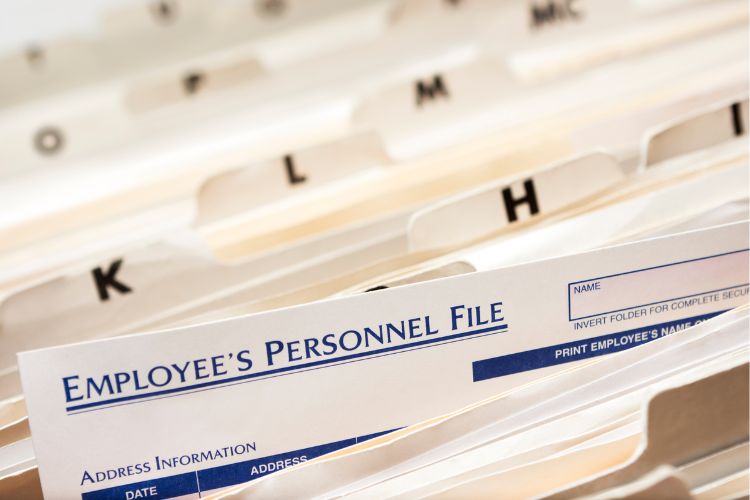Chasing Forms: What Belongs in an Employee File?
By Judy Perkins
One of the questions I often get from executives of entrepreneurial organizations is, “Why do I have to bother with proper documentation in employee files now?” They say, “it’s a hassle and I have more important things to do such as grow my business. Besides, my company is too small to focus on forms and documentation.”
Since your business goals are to grow your business, this means growing in terms of numbers of employees. If you don’t begin on the best footing, then as you build, you may find yourself sinking into the mud. One of the most frustrating activities is to have to change all your records management processes after you already have 10, 15 or 50 employees! It is like changing your accounts payable and receivable processes after you have been in business for a few years.
Another reasons to start maintaining employee files correctly from the start is that it helps you maintain control within your workplace. Proper documentation can set performance and conduct expectations, correct any inappropriate employee behaviors, improve job performance, and create a paper trail that reflects employment history that may help you with potential unemployment compensation claims. This paper trail is essential in proving you took the right actions that are in compliance with State and Federal laws and if done correctly will help you in a lawsuit.
What should be in an employee file? Here is a sample listing (electronic and/or hard copies), which is not all inclusive. Be sure to check with your employment attorney to make sure you are maintaining employee documentation correctly.
• Employment application
• Resume
• Interview evaluation forms
• Offer letters (always state offers in payroll periods of either bi-weekly or weekly)
• Reference check information
• Employment contracts and agreements
• Federal and State W4 forms
• Orientation checklist (completed and signed)
• Acknowledgement of receipt of employee handbook
• Receipts of safety training
• Benefit enrollment forms
• Record of changes to employee status
• Job descriptions (past and current jobs)
• Performance appraisals
• Disciplinary and corrective actions
• Resignation
• Termination information
• Exit interview
Those fun I-9’s should NOT be located in the employee file. The best practice is to create a separate file for just I-9’s that includes the I-9 retention schedule. Organize the forms alphabetically.
Do your business a favor. If you haven’t started a consistent records management and retention system for your employee data, start now! You may only have a few forms (in either electronic or paper) but over time, as you grow, you will find that proper documentation will be a valuable tool.
For those of you who already have an employee file system (electronic and/or paper), it’s time to audit your employee files and make sure that their contents are complete, are in compliance with State and Federal laws, and follow best documentation and record keeping practices.
It is never too early to begin to develop proper documentation; the success of your business may depend on it.
If you’d like to learn more about our Human Resources Audit service, please reach out to me: Judy@JudyPerkins.com
Copyright © 2023 Perkins Human Resources, LLC.
Contact
Phone
(505)484-8290
Judy@JudyPerkins.com
- By Appointment
- Services provided in person and virtually.

